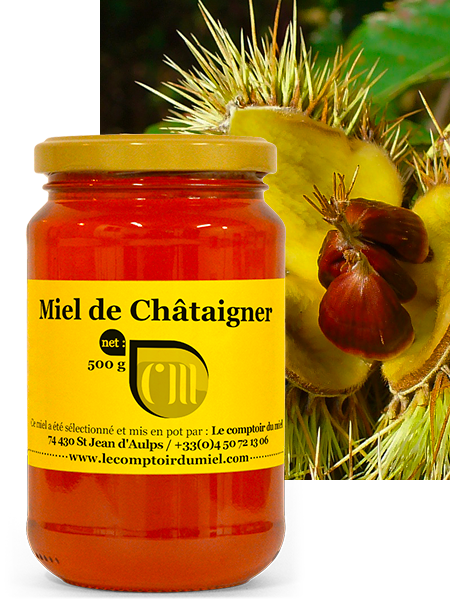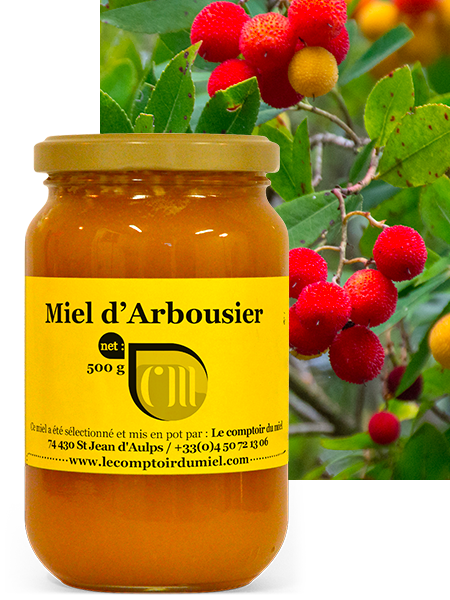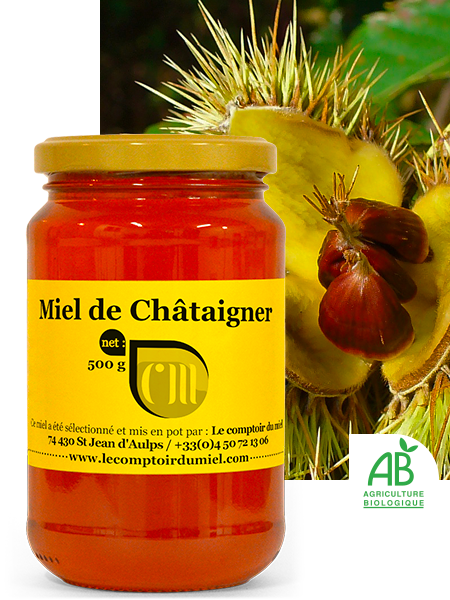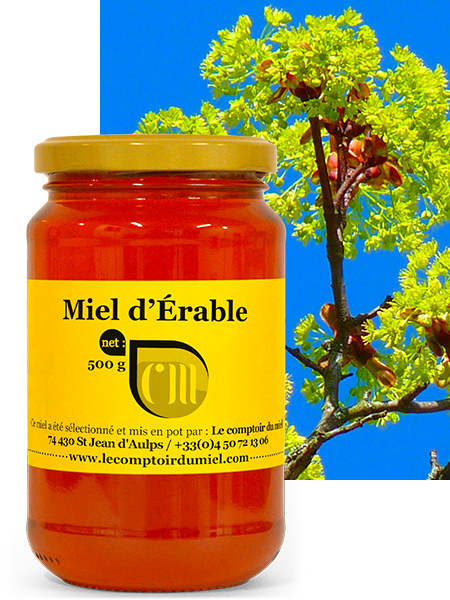Chestnut honey is a true delight for honey lovers. Indeed, it is a unique beekeeping product obtained from the nectar of the flowers of the chestnut treea tree belonging to the Castanea sativa species.
The chestnut tree is widespread in Europe, Asia Minor and parts of North America. It is a spontaneous species around the Mediterranean and in Corsica, as well as in Ardèche, where our chestnut honey is harvested. Flowering begins in mid-June and ends in some regions at the end of August.
This honey is distinguished by its unique sensory characteristics, dark hue and rich texture, making it a product prized as much for its gustatory qualities as for its potentially beneficial health properties.
The taste and smell of Chestnut honey:
Chestnut honey offers a robust and complex taste experience. With its deep, slightly bitter flavor, it often evokes notes reminiscent of the characteristic taste of chestnuts. Variability in flavor can be influenced by a variety of factors, such as the mineral composition of the soil in which chestnut trees thrive, as well as local climatic conditions.
The distinctive color of chestnut honey generally ranges from golden brown to dark brown, giving the honey a rich, warm hue. This color palette is often a reflection of the minerals present in the soil, as well as the precise moment of harvest. In terms of texture, chestnut honey has a denser consistency in some years, compared to some more liquid honeys, which makes it particularly appreciated in cooking, as it adheres well to food.
A distinctive feature of chestnut honey is its propensity to crystallize with difficulty. It is rich in fructosewhich influences its crystallization! However, some chestnut honeys can crystallize very quickly. This is due to its high glucose content. This crystallization in no way compromises its quality or nutritional properties – quite the contrary! The resulting granular texture can even be appreciated by those who prefer a thicker honey.
The benefits of Chestnut :
Beyond its sensory characteristics, chestnut honey is sought after for its potential health benefits. Like most honeys, it has antibacterial, antioxidant and anti-inflammatory properties. It is often consumed to boost the immune system, soothe the throat and contribute to general well-being.
Above all, it is reputed to be good for blood circulation, and is recommended for people suffering from anemia or asthenia.
Chestnut honey in cooking :
Because of its versatility, chestnut honey can be enjoyed in many different ways. Whether enjoyed directly or added to hot drinks. It can also be used to sweeten various various dishes in the kitchen. Combined with cheeses, it offers a rich, nuanced culinary experience.
As with all honeys, quality and specific characteristics can vary according to geographic region and weather conditions at the time of harvest, adding a regional and seasonal dimension to this treasure of nature.
Did you know?
Chestnut trees are good for everything: young shoots are used for basketry. The bugs make compost. Leaves were once used to fill straw mattresses.




Reviews
There are no reviews yet.